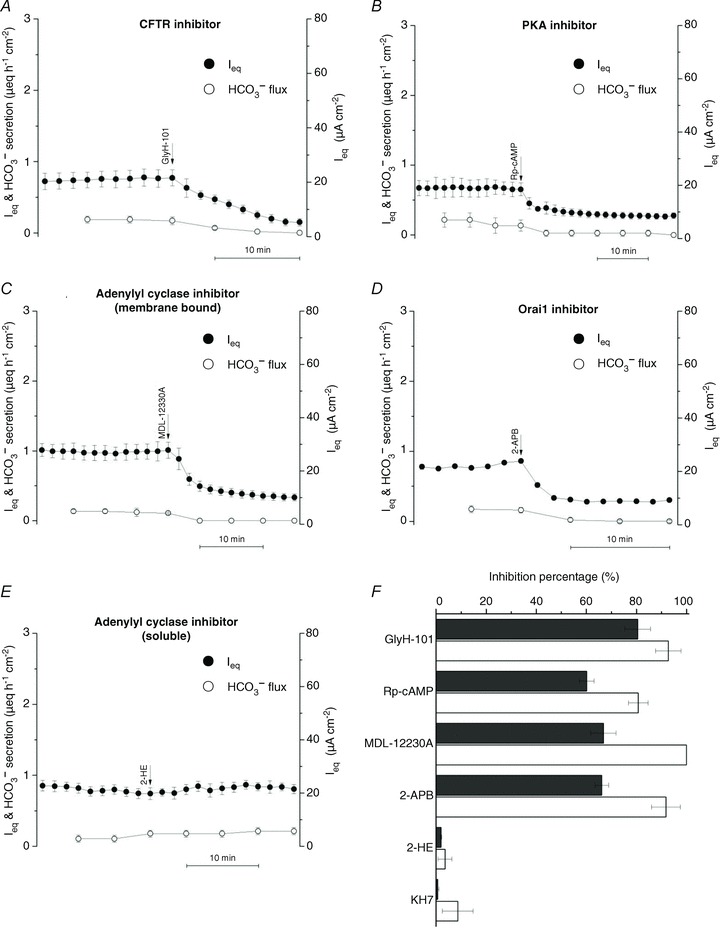Figure 11. Inhibitor effects suggest basal Ieq and HCO3− secretion depend on CFTR and on Ca2+-dependent, membrane-bound adenylyl cyclase activity, but not on HCO3− -stimulated soluble adenylyl cyclase.

A, basal Ieq was abolished by apical addition of the CFTR open channel blocker GlyH-101 (100 μmol l−1, n= 4). B, basal Ieq and net HCO3− secretion were inhibited by bilateral addition of 200 μmol l−1 Rp-cAMPS, a competitive inhibitor of cAMP-dependent PKA (n= 4). C, basal Ieq and HCO3− secretion were reduced by basolateral MDL-12330A (200 μmol l−1), an inhibitor of membrane-bound adenylyl cyclase (n= 4). D, inhibition of basal Ieq and HCO3− secretion by apical 2-APB (100 μmol l−1), an inhibitor of store-operated Ca2+ channels (n= 3). E, an inhibitor of HCO3−-stimulated soluble isoform of adenylyl cyclase, 2-HE (20 μmol l−1), had no effect on Ieq or HCO3− secretion (n= 3 each) when added bilaterally. F, summary of inhibitor effects on basal anion transport. ▪, Ieq; □, HCO3− secretion.
